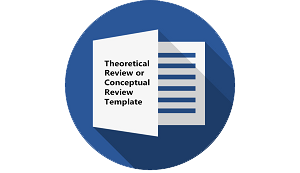Utilization of English Video Lessons and Their Significance to the Philippine Language Curriculum: A Literature Review
DOI:
https://doi.org/10.30957/ijoltl.v7i3.703Keywords:
development, video clips, validation, instructional materialAbstract
Using the A- Analyze, D- Design, D- Produce, I- Implement, and E- Evaluate (ADDIE) instructional design approach, this study aims to develop and evaluate video clips as instructional materials in teaching English 7 learners. This research was done to establish which lessons should be included, as well as the content validity and acceptance of the created video clips.
The researcher used the descriptive survey and developmental methods of study to create the video clips. The following were the critical measures that were taken: 1) planning, 2) video clip development, 3) validation/evaluation, and 4) result stage.
Moreover, the researcher used two sets of questionnaires/checklists to gather pertinent data on the content validity of the developed video clips in terms of objectives, lesson, organization, language, and relevance; and the level of acceptability along with suitability, adequacy, and relevance. The suggestions were consolidated and integrated into the revision of the developed video clips in English 7.
Students and teachers in public schools should try out the generated video clips in English 7 as extra educational material, according to the researcher. It can also be used to remedy the lack of educational materials that cover the entire teaching and learning process. More changes to the created video clips should be made to accommodate learners' frustration levels.
Finally, it is recommended that the school administrators should advise and encourage teachers to produce and come up with instructional materials in the different subject areas for additional learning materials. Also, an in-service seminar-workshop on instructional design in every subject area should be organized and conducted by education authorities in the division or in the region.
Downloads
References
Gee, James Paul, and Elisabeth R. Hayes. 2011. Language and Learning in the Digital Age. Abingdon, England: Routledge.
Lapid, Milagros G. and Josephine B. Serrano. (2014). English Communication Arts through Filipino Literature I. Quezon City: St. Bernadette Publishing House Corporation.
Lonergan (2013). Curriculum Instruction and Materials in English on Teaching Concepts, Findings, and Implications. McCutcheon Publishing Corporation.
McNulty & Lazarevic. 2013. ‘Catching words: Exploiting Video Clips Discourse in the Foreign Language Classroom.’ In Mishan, Freda and Angela Chambers (eds.), Perspectives on Language Learning Materials Development. Oxford: Peter Lang. 111-148.
Paler-CAlmorin, Laurentina. (2016)Research and Thesis Writing: With Statistics Computer Application. Manila, Philippines: Rex Book Store.
B. Unpublished Theses
Abregana, Joselito. (2012) The Reading Competencies of High School Students of Dipolog City Division: Basis for Strategic Reading Program. Masteral Thesis. Master of Arts in Educational Management. Andres Bonifacio College, Zamboanga del Norte, Philippines.
Corpuz & Salandanan. (2015) Development and Validation of a Module in Multi-Media Production using Adobe System. Unpublished Master’s Thesis, Laguna Polytechnic College.
Salazar. (2017) Proposed Video Instructional Materials for English I Students. Unpublished Master’s Thesis.
Cortez, Jennifer R. (2013) Factors Affecting the Reading Comprehension of Selected Students of the University of Makati School Year 2012-2013. Action Research. Master of Arts in Education. University of Makati, Makati, Philippines.
C. Newspaper, Magazine, Journals, Articles
Danurwindo, Kloex. An Analysis of Video Clips in the Learning Process of Undergraduate Students. IAIN Tulungangung, Indonesia (January, 2014)
Labuan, Romualdo. An Analysis of Weblogs' Grammatical Errors of Filipino Learners of English as Second Language. DLSU Research Congress 2015 De La Salle University, Manila, Philippines (March 2-4, 2015)
Koksal, P. “Error: Some Problems of Definitions and Identification†in Applied Linguistic.Vol 12, No. 2 (Oxford, 2014)
Macasinag, Angelo. Good English, Better Opportunities. The Manila Bulletin (November 17, 2011)
Rodriguez, Ma. Felisa D., Simplified Approach to Statistics, Mutya Publishing
Inc., Valenzuela City, 2012
D. Online Resources
Harrison Tom (2012). Technology at Home and in Their Classrooms retrieved from http://www.pewinternet.org/2013/02/28/how-teachers-are-using- technology-at-home-and-in-their-classrooms/
Ornstein, Lee. (2012) Instructional Design Theory retrieved from http://www.ic.arizona.edu/ic/edp511/isd1.html
Persky and Danne. (2013). Supporting the Classroom with Materials for Instructions retrieved from http://www.ascd.org/publications/books/109011/chapters/Supporting-the-Classroom-with-Materials-for-Instruction.aspx
Downloads
Published
How to Cite
Issue
Section
License
Authors who publish with this journal agree to the following terms:
- Authors retain copyright and grant the journal right of first publication with the work simultaneously licensed under a Creative Commons Attribution-ShareAlike 4.0 International License that allows others to share the work with an acknowledgement of the work's authorship and initial publication in this journal.
- Authors are able to enter into separate, additional contractual arrangements for the non-exclusive distribution of the journal's published version of the work (e.g., post it to an institutional repository or publish it in a book), with an acknowledgement of its initial publication in this journal.
- Authors are permitted and encouraged to post their work online (e.g., in institutional repositories or on their website) prior to and during the submission process, as it can lead to productive exchanges, as well as earlier and greater citation of published work (See The Effect of Open Access).












